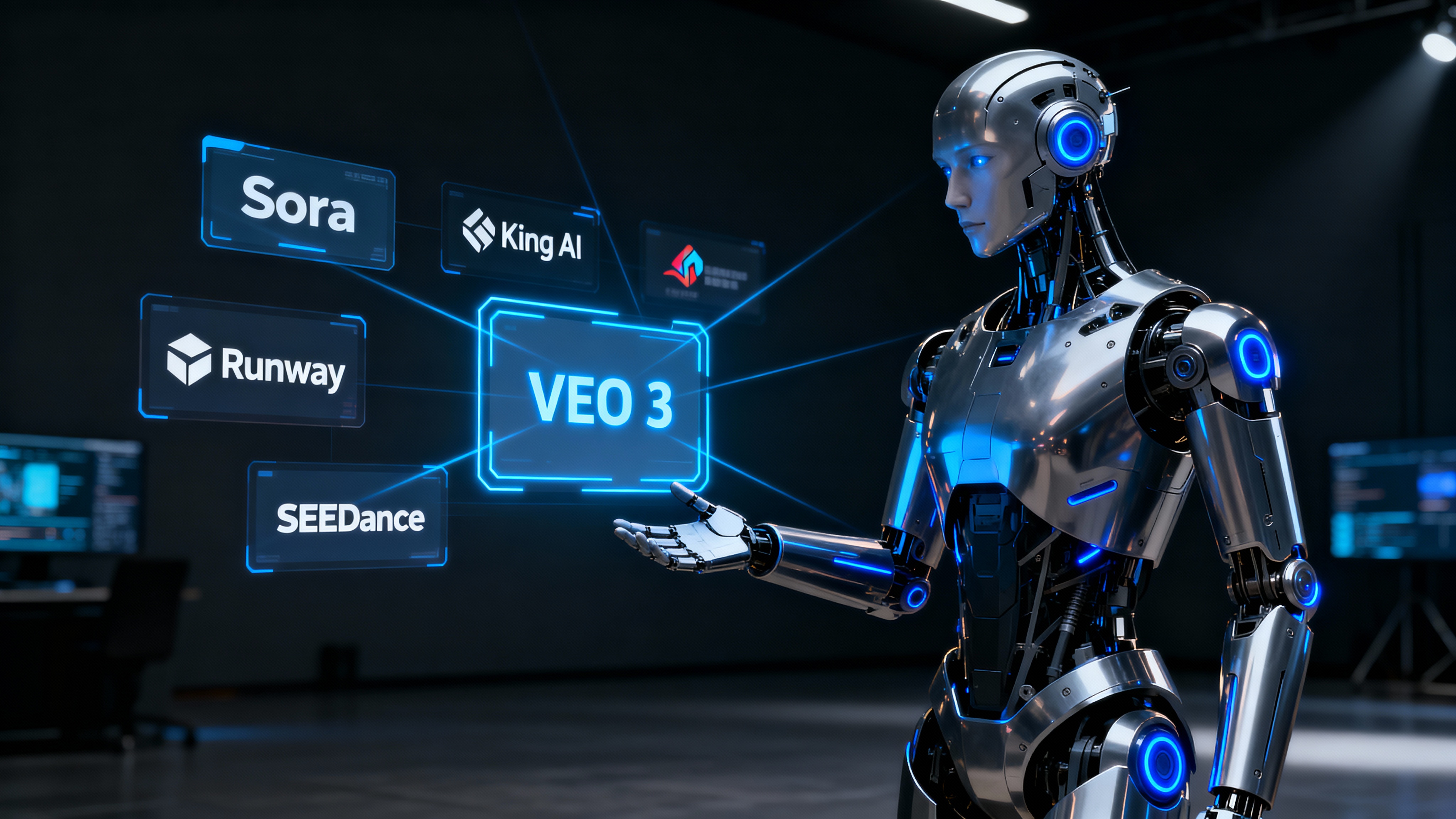
Google’s updated generative model, Veo 3, has generated a lot of buzz. Short videos that are hard to distinguish from human-made footage have gone viral. We’ll explain what’s special about this AI model, what it can do, whether there are any similar neural networks to Veo 3, and how to access it in Russia.
What is Veo 3
This is a generative AI model, currently considered one of the best for video creation. The neural network can generate videos and immediately add voiceover—dialogue, any sounds, and background noise. Unlike existing neural networks, Veo has several advantages:
- AI understands the physics of objects - character movements will be smooth, and effects will be realistic.
- Veo’s neural network processes requests better, regardless of the prompt type - you can create video content from a reference (image, video) or a text description.
- AI maintains consistency - it doesn’t confuse the first and last frames, and it preserves characters unchanged, without adding or distorting them.
- The neural network creates content in 4K resolution - the image is clear and detailed.
- You can specify the format and genre (from anime to Pixar-style cartoons) - give it the task of generating a 90s-style video or creating a video of a flyover over a city to create a panoramic image.
Since the developer positions the AI model as a professional tool for creating cinematic content, Veo was first tested by screenwriters, directors, and short filmmakers.
The results of the presentation can be found online. It turned out that Veo can visualize emotions, capture the mood, and convey the atmosphere of the scene unfolding on screen. Considering that the videos are only 8 seconds long, it can be argued that Veo’s neural network is a breakthrough for AI model developers.
Why look for analogs?
People are seeking alternatives due to the difficulty of accessing the platform, including blocking and the need to register an account with an IP address in another country. Even if they manage to register, Google offers new users a free trial, but the waiting time can range from a couple of days to several weeks. Therefore, video content creators are looking for options with similar functionality but fewer restrictions.
On our website, you can evaluate the functionality of AI models for free, without downloading third-party apps. You can use them after logging into the platform, using the Telegram bot, or via a browser extension.
Review of analogues
We’ve compiled several neural networks that, while not identical to Veo, are at least as close to the functionality of Google’s solution as possible. The models work with text prompts and offer extensive customization options for creating videos in various styles and formats, as well as for various tasks, such as advertising and animation:
- Sora – a flexible OpenAI development often chosen by designers and creators. This neural network is considered a Google equivalent; it understands queries well and generates videos with high visual fidelity. Images are characterized by good detail and realism. Sora also understands the physics of objects without any problems.
- Kling AI – can animate static images. It works with combined prompts (image and text), generating videos 5-10 seconds long, with the option to extend them up to 3 minutes. It offers customizable creativity levels, aspect ratio, and timing.
- Runway – a similar network that generates 5-10 second videos based on a reference image. The developers recommend uploading images generated by MidJourney or similar AI models.
- SEEDance – a similar network from ByteDance for generating realistic videos based on text descriptions. Creates videos up to 16 seconds long, taking into account physics and gravity when visualizing object movement. It preserves characters’ faces and facial expressions, and accurately executes the sequence of scenes specified in the description.
Access VEO and similar services for free, as well as AI models for image generation, without registering a foreign phone number or bank card, at f.pro. Simply choose a neural network and create unique content.
Why choose Veo 3
The main reason is the ability to simultaneously generate video and audio. The neural network can automatically overlay sounds, noises, or even reproduce human dialogue, preserving facial expressions and accurately tracking lip movements. The dialogue, incidentally, can also be in Russian, with good intonation and correct stress placement. Furthermore, the neural network is well-versed in cultural nuances. If, for example, the prompt specifies St. Petersburg as the location, the AI will generate a video in which the city will be recognizable. Similarly, the neural network can create a commercial in the style of the early 2000s. This is a unique feature that no other similar technology currently offers.
Veo also wins because:
- error minimization;
- frame sequencing;
- extensive customization;
- the ability to change video length.
The user can feel like a director, adjusting lighting, depth, and sharpness, and repositioning the camera. The AI supports dialogue mode, handles queries in any language, and accepts images as reference.
How to get access
Veo, unlike some similar services, is not available in Russia. To evaluate the neural network’s capabilities, you’ll have to find workarounds. Even if you manage to register, you’ll have to pay a subscription—starting at $20 per month, with a limit of 10 requests.
The second option is Telegram bots. This method is unreliable and unsafe. At best, you might pay for a subscription and be blocked. At worst, you might lose personal data, including your phone number and bank card information.
To avoid the risk of scammers, use trusted websites. For example, the following are available on f.pro:
- Advanced AI models for generating text, images, and videos;
- Flexible pricing options – you can choose a subscription for specific tasks;
- Free trial generations – to evaluate the functionality.
Neural networks are gradually becoming an accessible tool that enables both professional directors and screenwriters, as well as ordinary users, to unlock their creative potential.

